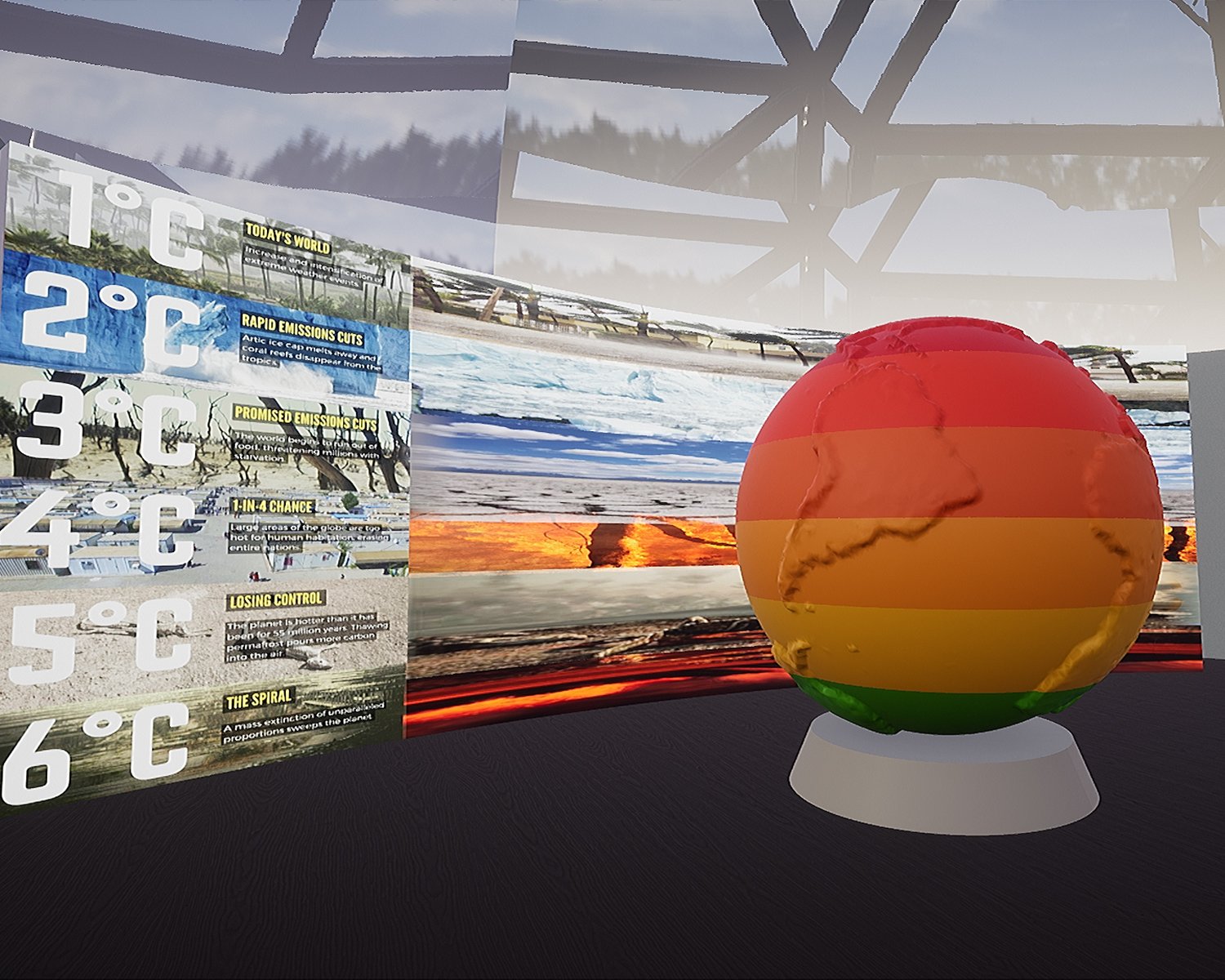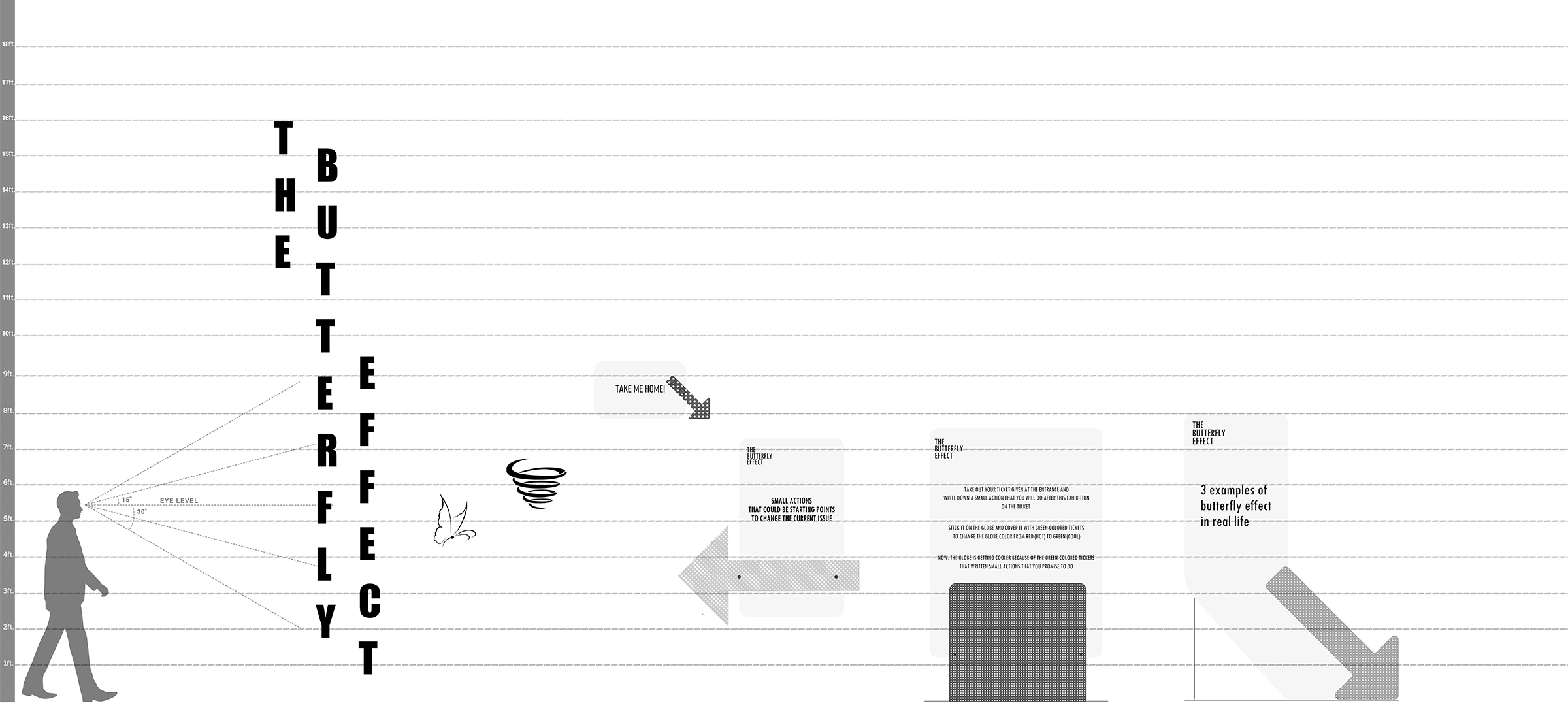
Environmental Issues Exhibition
DESIGN CONCEPT
This exhibition explores the concept of the butterfly effect — the idea that small causes, like a butterfly flapping its wings, can have significant effects, such as causing a tornado on the other side of the world. The focus is on examining the connection between the onset of the 2020 pandemic, symbolizing the ‘tornado’, and underlying environmental issues, representing the ‘butterfly flapping its wings’. The goal is to provide insights into how these interconnected challenges can be addressed, offering solutions for both the pandemic and environmental problems.
design statement
Mysterious
The purpose is to know how the theory of butterfly effect implies to our lives and why we need to understand of the importance of small actions that greatly effect our lives by learning some examples of the butterfly effect to make our lives better.
Unpredictable
Incremental
Affected
SITE analysis
In order to attract as many people as possible, and initiate change, Central Park was selected as the site. It is also the most visited park, internationally.
TARGET & SPONSORS ANALYSIS
Generation Y & Z
What they are most interested in and consuming is a product or brand related to environmental protection, and by communicating the most through social networks, there is a great opportunity to promote the exhibition quickly through the potential they have.
The sponsors of this exhibition are neste and patagonia, both brands aiming for sustainability, and are active in the use of recyclables, rather than just setting goals. Since my exhibition aims to raise environmental issues through the theory of the butterfly effect, this exhibition consists of sponsors of these two brands.
Material & color
Most of the materials used in this exhibition are recycled materials, and in order to meet the purpose of the exhibition only for a short period of time, the lightest materials were used.
facade
This façade was designed with the inspiration of the butterfly flapping its wings. In order to give the impression that a butterfly is flapping its wings, several layers of thin wires are designed with wings of different shapes.
floor plan
graphic design
entrance
This exhibit succinctly explains the butterfly effect, particularly in the context of how the pandemic emerged. A key factor highlighted is the impact of climate change on bat habitats. As these habitats diminish, bats increasingly converge in areas inhabited by humans, thus escalating the probability of contact and subsequent virus transmission.
At the entrance, a video on climate change sets the stage for the exhibit. Visitors then encounter a series of models, culminating in a bat-shaped doorway. This leads to a detailed replica of a virus spike protein. Interaction with the bat model and passage through the bat-shaped gate is symbolic, representing the merging of human and bat habitats. This interaction is illustrative of how close proximity between species can facilitate the emergence of viruses like COVID-19.
1
3
2
deforestation room
The second experience in the exhibition delves into deforestation, a major environmental issue that can contribute to virus outbreaks. This segment has been meticulously designed to create a profound sensory impact. A striking red light is employed for a strong visual effect, while the pervasive sound of mosquitoes, known for transmitting viruses, fills the air to engage the auditory senses. Additionally, tree branches are incorporated to stimulate the sense of touch, further immersing visitors in the thematic exploration of deforestation’s consequences.
Melting Glacier room
The subsequent exhibit focuses on the melting of glaciers. It underscores the alarming possibility that as glaciers recede, long-dormant microbes trapped within the ice could be released. This thawing presents a risk of unleashing new viruses, highlighting yet another dimension of the complex impact of global warming on public health.
3 examples of butterfly effect room
This section of the exhibit illustrates three examples of climate-related issues, with a focus on the transformative power of small actions, inspired by the efforts of Greta Thunberg. This area emphasizes how even minor actions can have significant impacts on climate change and future pandemics.
plastic rooms
The fourth area of the exhibit is dedicated to educating visitors on small, impactful actions that can help mitigate climate change and prevent future pandemics. Upon entering, the door displays a specific number, indicating the amount of greenhouse gas reduction achievable through everyday actions. This interactive approach allows visitors to understand the tangible impact of their choices.
For example, a figure of ‘11 lbs’ may be displayed on the door. Inside, this number is contextualized with the information that planting a single tree can reduce CO2 emissions by 11 lbs annually. This area also highlights the excessive use of plastics in daily life, encouraging visitors to reflect on and modify their consumption habits for a more sustainable future.
discovering room
The final space in the exhibit provides an in-depth exploration of solutions to climate change. At the entrance, a globe, segmented into six colors representing various temperature zones, draws inspiration from Mark Lynas’s book ‘Six Degrees.’ This visualization underscores the critical message that a six-degree increase in Earth’s temperature could lead to the extinction of many forms of life.
For example, a figure of ‘11 lbs’ may be displayed on the door. Inside, this number is contextualized with the information that planting a single tree can reduce CO2 emissions by 11 lbs annually. This area also highlights the excessive use of plastics in daily life, encouraging visitors to reflect on and modify their consumption habits for a more sustainable future.




















